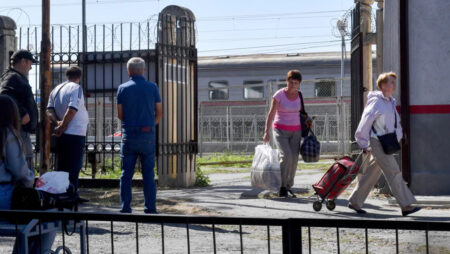NEW YORK, March 15 (Reuters) – The U.S. Following Russia’s invasion of Ukraine, wild fluctuations in asset prices have prompted some investors to reduce risk in their portfolios, fearful that the sort of volatility witnessed in commodities in recent weeks may spread to other markets.
Liquidity — or the ease with which investors may purchase or sell an asset without impacting its price – is at stake. While periods of limited liquidity have led to severe gyrations in markets over the previous decade, indicators of stress have been more prevalent in recent weeks, worsened by everything from sanctions against Russia to predicted central bank tightening.
If market liquidity continues to worsen, investors are concerned that other assets would be exposed to the type of wild price fluctuations that have ravaged commodities this month, including a one-day doubling in nickel prices and a jump in oil to 14-year highs.
“It’s not always apparent where the contagion risks are,” Frances Donald, Global Chief Economist at Manulife Investment Management, said. “This is why liquidity should be watched not just daily, but hourly at this point, for indicators of trouble.”
MARKET IN TIME OF STRESS
Markets are displaying rising symptoms of stress, according to financial data.
The so-called FRA-OIS spread, which measures the difference between the US three-month forward rate agreement and the overnight index swap rate, recently reached its highest level since May 2020, while another closely watched short-term funding stress gauge, the spread between the US three-month Libor and the overnight index swap rate, also reached a new high. Stock volatility (.VIX), currency volatility (.DBCVIX), and US Treasury yields (.MOVE) have all increased.
Another possible red signal was the suspension of sales of two products connected to crude oil and market volatility by Barclays (BARC.L) on Monday, which some saw as an indication of a shortage of liquidity.
Among the assets that investors have been selling are developing market bonds, which suffered a $3.54 billion net outflow last week, the worst drop since April 2020. According to BofA Global Research, treasuries have received $5.4 billion in inflows over the last nine weeks.
THE RUSSIA-UKRAINE CONFLICT IMPACT
In reaction to the Ukraine crisis, Mike Vogelzang, Chief Investment Officer of CAPTRUST in Boston, stated his company has taken “strong action” to minimise the risk profile of its portfolios. This included reducing equity exposure and selling mortgages and a variety of corporate bonds, which were replaced with highly liquid short-term US Treasuries.
“We’re concerned about a possible global cash scarcity,” he warned. “We had been severely underweight in US Treasuries relative to our benchmarks for years, so we really filled that bucket up and lowered the illiquidity risk in our portfolios.”
Events like as last week’s jump in nickel prices – which occurred when one of the world’s biggest producers purchased significant quantities of nickel to cover bets on dropping prices and pay expensive margin calls – suggest the possibility for “liquidity panic” in markets, according to Vogelzang.
Investors also emphasised counterparty risk, which refers to the possibility of defaults on contractual commitments tied to an underlying commodity. The Securities and Exchange Commission issued an unusual warning on Monday, stating that concentrated holdings of prime brokerage counterparties are particularly concerning.

INVESTORS CONCERN ABOUT THE CONFLICT
Bill Campbell, Global Bond Portfolio Manager at DoubleLine, is concerned about the impact of the Ukraine crisis on a “systemically important” part of global supply chains that affects not only energy prices but also vital commodities such as wheat, which Ukraine, and Russia both produce in large quantities.
Campbell has lowered his portfolio’s exposure to Eastern European nations and is attempting to separate investment between commodities importing and commodity exporting countries in order to minimise risk.
“We need to be more certain that this catastrophe will be restricted to the area,” he added. According to Ryan O’Malley, a fixed income portfolio manager at Sage Advisory, the dispute has heightened liquidity worries in the corporate credit market, prompting him to move his portfolio toward more liquid assets like Treasuries. “We’re attempting to acquire more fluids,” O’Malley said.
Published By : VATSAL KOTHA
Edited By : KRITIKA KASHYAP













